Are you struggling with blurry vision at different distances? Progressive eyeglass lenses, also known as no-line bifocals, offer a seamless solution. Unlike traditional bifocals, progressive lenses provide clear vision for near, intermediate, and far distances without noticeable lines. Find the perfect pair for your needs and lifestyle by exploring the wide selection at https://www.mozaer.com/search?q=progressive+eyeglass+lenses and experience the convenience and comfort of sharp, clear vision at all distances.
【Understanding Progressive Lenses】
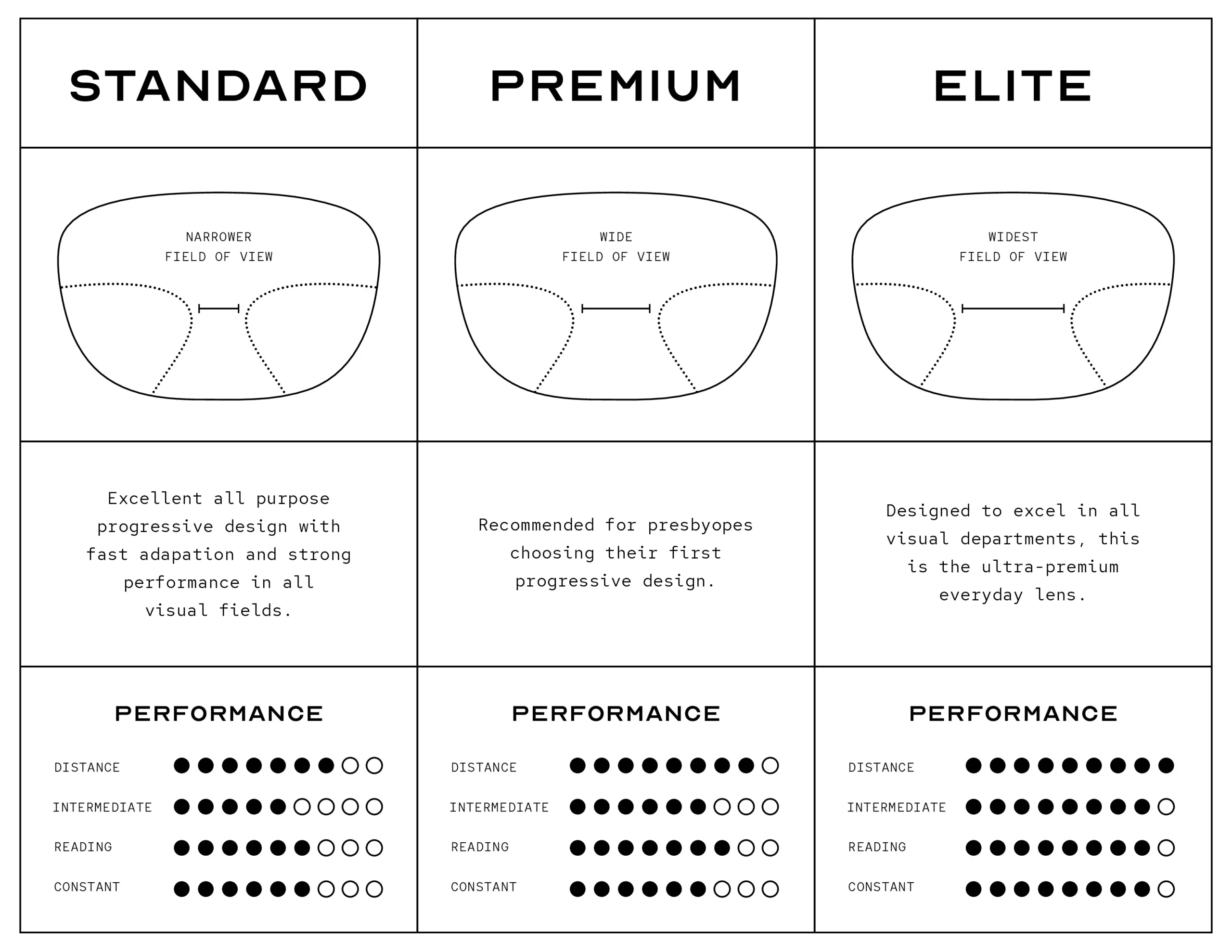
What are Progressive Lenses?
Definition: Multifocal lenses providing seamless vision correction for near, intermediate, and far distances.
Progressive eyeglass lenses, also known as no-line bifocals or multifocal lenses, offer a seamless transition between different vision correction powers. Unlike bifocals with their distinct lines separating near and far vision zones, progressive lenses gradually change power from top to bottom, providing clear vision at all distances—near, intermediate (like computer screens), and far. This sophisticated design eliminates the abrupt changes in focus experienced with traditional bifocals, leading to a more natural viewing experience. They are ideal for individuals experiencing presbyopia, a common age-related condition that affects the eye’s ability to focus on nearby objects. In 2025, the demand for these lenses continues to rise.
Benefits: Eliminates the need for multiple glasses; improved visual comfort and reduced eye strain.
The primary benefit of progressive lenses is the convenience of having just one pair of glasses for all your visual needs. No more switching between reading glasses and distance glasses! This eliminates the hassle and inconvenience of carrying multiple pairs. Moreover, the gradual power change minimizes the distortion and visual jump experienced with bifocals, leading to significantly improved visual comfort and reduced eye strain. Many users report less eye fatigue, especially during prolonged near-work tasks like reading or working on computers. This enhanced comfort translates to better productivity and a more enjoyable visual experience throughout the day. These improved visual capabilities enhance your daily quality of life.
Progressive Lenses vs. Bifocals: A Detailed Comparison
Bifocals: Two distinct vision zones (near and far), leading to visible lines and potential distortion.
Bifocal lenses feature two distinct segments: one for distance vision (located in the upper portion of the lens) and another for near vision (located in the lower portion). The visible line separating these segments is a hallmark characteristic of bifocals. This line can be distracting for some users and may limit the field of vision, making it challenging to see objects in the intermediate range comfortably. Furthermore, the abrupt change in focus between the two segments can sometimes cause distortion or a “jump” in vision when shifting gaze. While bifocals remain a viable option for some, their limitations are clearly apparent when compared to the advancements in progressive lens technology.
Progressive Lenses: Gradual transition between vision zones, offering a wider field of view and more natural vision.
In contrast to bifocals, progressive lenses offer a smooth and gradual transition between the different vision correction zones. This gradual power change eliminates the noticeable line and reduces distortion. The result is a wider field of view and a more natural visual experience, closer to the way your eyes naturally focus. This seamless transition is particularly beneficial for individuals who frequently switch between near, intermediate, and far vision tasks. The enhanced clarity and comfort make progressive lenses a superior choice for many individuals, especially those seeking superior visual acuity and a more comfortable viewing experience throughout their daily routines. To find the perfect pair of progressive eyeglass lenses for your needs in 2025, visit https://www.mozaer.com/search?q=progressive eyeglass lenses”>progressive eyeglass lenses – they offer a wide selection and can help you find the right fit.
【Types and Technologies of Progressive Lenses】
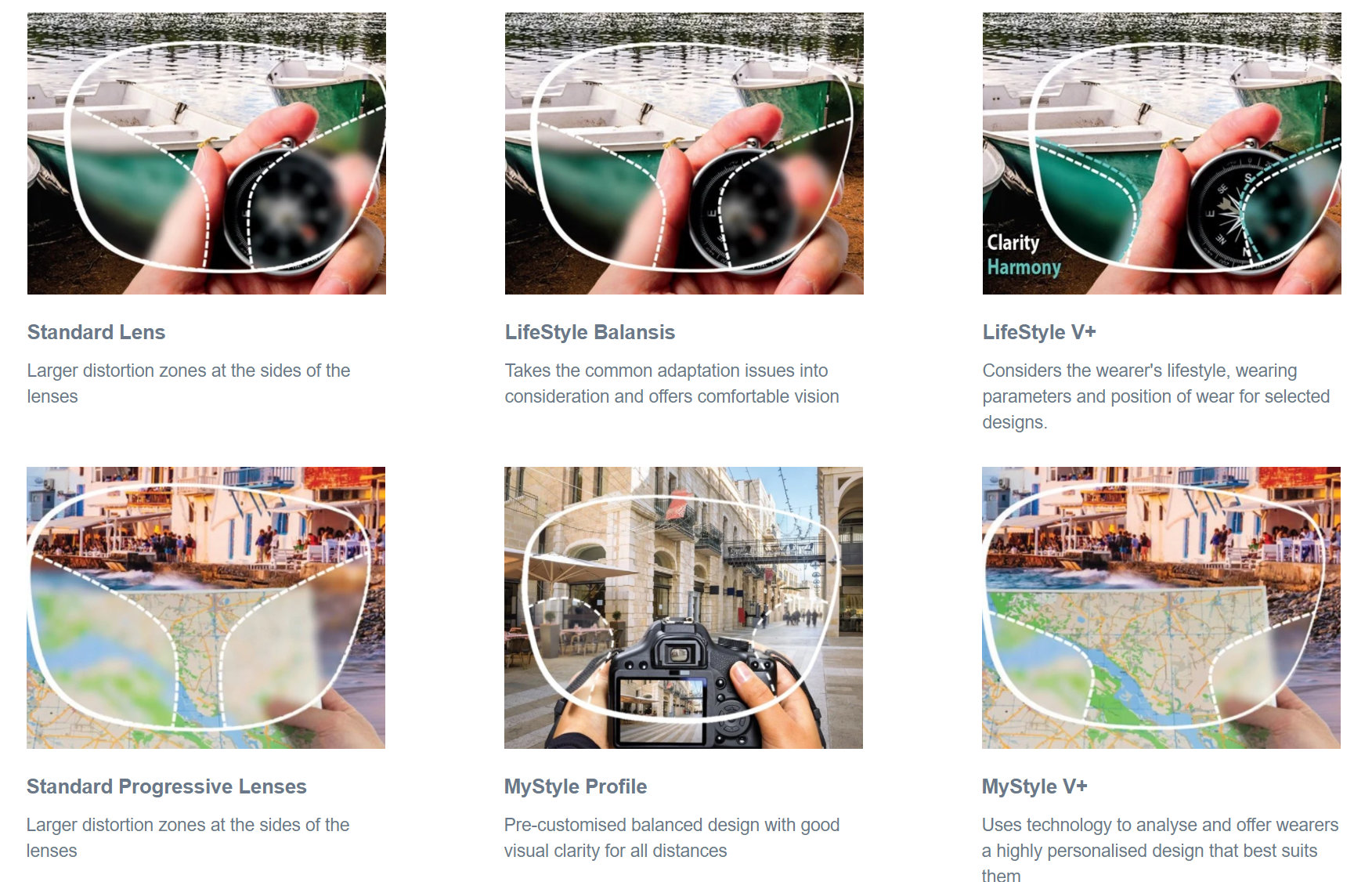
Different Brands and Their Technologies
Essilor Varilux: Known for advanced technology and wide viewing zones; examples of specific models and their features.
Essilor Varilux progressive eyeglass lenses are renowned for their advanced technology and exceptionally wide viewing zones. They are a popular choice among consumers seeking superior visual clarity and comfort. Varilux utilizes innovative designs and lens materials to minimize distortion and maximize the usable areas of the lens, ensuring clear vision across all distances. Specific models, such as the Varilux X series and Varilux S series, offer unique features like personalized vision optimization and enhanced intermediate vision zones designed for digital devices. These features cater to the needs of individuals with varying lifestyles and visual demands. The advanced design of Varilux progressive lenses provides a seamless transition between vision corrections, resulting in a more natural viewing experience. These superior progressive lenses are the top choice for many users in 2025.
Other Leading Brands: Comparison of features and pricing across brands like Zeiss, Nikon, etc.
Besides Essilor Varilux, several other leading brands offer high-quality progressive lenses. Zeiss, known for its precision optics, produces progressive lenses that are prized for their sharpness and clarity. They often incorporate technologies to minimize peripheral distortion, providing a wider field of view. Nikon’s progressive lenses are also highly regarded, offering a balance between optical performance and affordability. These lenses, as well as others from brands like Shamir and Hoya, each have their unique technological strengths and selling points. Factors like lens material, design features, and available coatings affect both performance and pricing. In 2025, consumers have a wide range of options to choose from, allowing them to select progressive eyeglass lenses that best fit their budget and visual needs. Consider comparing features and prices to find the best progressive lenses for your needs.
Choosing the Right Technology for Your Needs
Factors to consider: Lifestyle, prescription strength, budget, and individual preferences.
Selecting the right progressive eyeglass lenses involves considering several crucial factors. Your lifestyle plays a significant role; individuals who spend long hours working on computers will benefit from lenses with optimized intermediate vision zones. The strength of your prescription also impacts the lens design. Stronger prescriptions might require more advanced technologies to minimize distortion. Budget is, of course, a major consideration. High-end progressive lenses offer superior performance but come with a higher price tag. Finally, personal preferences should guide your decision. Some individuals prefer certain lens materials or coatings due to comfort or aesthetic reasons. In 2025, understanding these factors is key to making an informed decision.
Data on satisfaction rates with different lens technologies based on user reviews.
Extensive user reviews and satisfaction data reveal a correlation between lens technology and user experience. High-end progressive lenses from brands like Essilor Varilux and Zeiss consistently receive higher satisfaction ratings due to superior optical clarity, reduced distortion, and wider fields of view. Customer reviews often highlight the enhanced visual comfort and reduced eye strain associated with these advanced lenses. While more affordable options exist, they may not provide the same level of visual performance, leading to lower satisfaction scores in some instances. Analyzing user feedback and comparing features across various brands helps customers make a well-informed choice to obtain the best progressive eyeglass lenses for their unique needs in 2025. To find the best progressive lenses for your needs, browse the wide selection at https://www.mozaer.com/search?q=progressive eyeglass lenses”>progressive eyeglass lenses and discover the perfect fit for your vision.
【Addressing Common Concerns about Progressive Lenses】
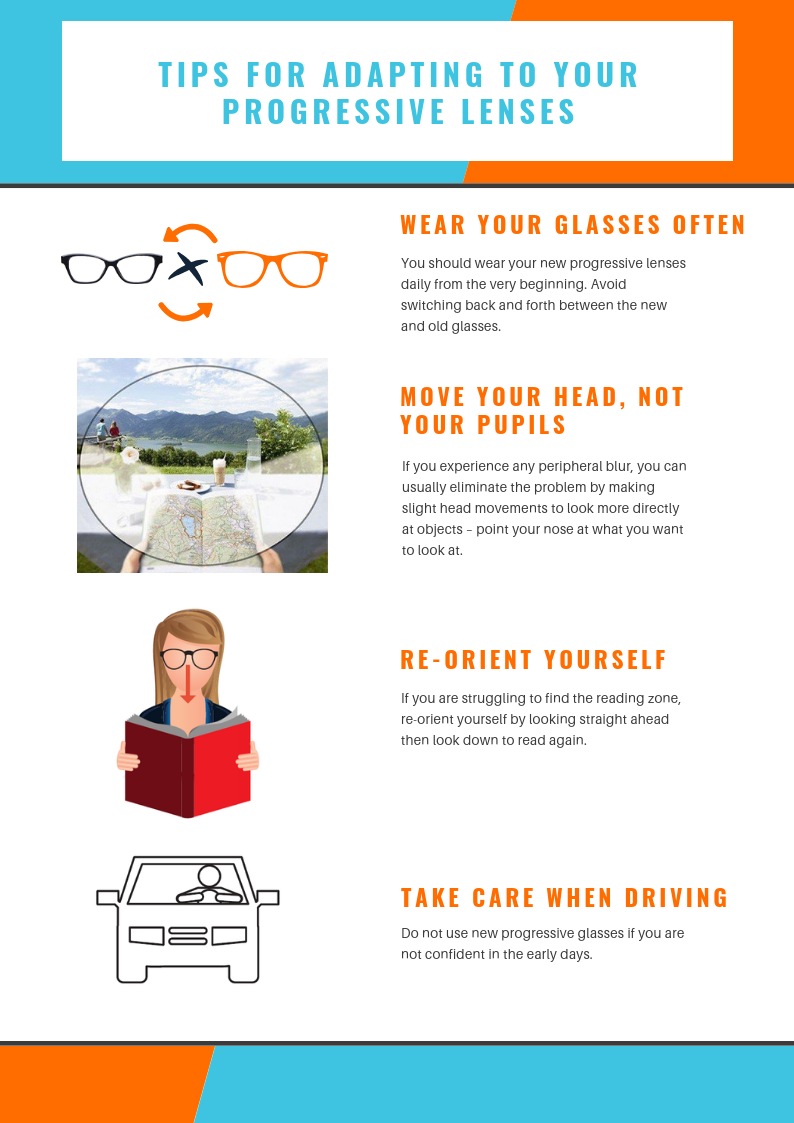
Adjustment Period and Adaptation Tips
Average adjustment time: Statistics on how long it typically takes to adjust to progressive lenses.
Adjusting to progressive eyeglass lenses takes time, varying from person to person. While some individuals adapt quickly within a week, others might need several weeks, or even a couple of months. The average adjustment time is generally considered to be around 2-4 weeks. Several factors influence adaptation speed, including the wearer’s age, prescription strength, and previous experience with eyeglasses. First-time eyeglass wearers may experience a longer adjustment period compared to those already accustomed to corrective lenses. In 2025, optometrists emphasize patient education and support during this crucial period.
Tips for faster adaptation: Practical advice, including exercises and techniques.
To accelerate the adjustment process for progressive lenses, several practical tips can be employed. Start by wearing your new progressive glasses for short periods initially, gradually increasing the duration throughout the day. Focus on different areas of the lens to acclimate your eyes to the various vision zones. For example, look through the top of the lens for distance vision, the middle for intermediate distances like computer screens, and the bottom for reading. Practice simple eye exercises, such as focusing on nearby and distant objects alternately, to improve eye muscle coordination. Avoid sudden head movements when transitioning between visual tasks. Consistent and gradual use promotes faster adaptation and helps your brain process the changes in visual input efficiently. With patience and these techniques, the adjustment period for progressive eyeglass lenses becomes significantly smoother in 2025.
Cost and Value: Are Progressive Lenses Worth It?
Price range: Data on the cost of progressive lenses across different brands and technologies.
The cost of progressive eyeglass lenses varies considerably depending on several key factors. Brand reputation plays a role, with premium brands like Essilor Varilux and Zeiss typically commanding higher prices compared to more affordable options. The chosen lens material also impacts cost, with higher-index materials providing thinner and lighter lenses but increasing the price point. Technological advancements, such as personalized vision optimization and enhanced intermediate viewing zones, also influence the final price. The price range for progressive lenses in 2025 can extend from a few hundred dollars to well over a thousand dollars, reflecting the wide array of options available to consumers.
Long-term cost savings: Comparison of the cost of progressive lenses versus multiple pairs of glasses.
While the initial investment in progressive eyeglass lenses might seem significant, it often translates into long-term cost savings compared to purchasing multiple pairs of glasses for different visual needs. Instead of needing separate glasses for distance vision, intermediate tasks (like computer use), and reading, progressive lenses consolidate all these corrections into a single pair. This eliminates the need for multiple frames and lenses, reducing overall expenses. This benefit is particularly compelling for individuals with significant prescriptions, or those who lead active lifestyles requiring clear vision across varying distances. The long-term value proposition of progressive eyeglass lenses is undeniable, making them a cost-effective and convenient solution for many in 2025. For a wide selection of progressive eyeglass lenses to suit your budget and needs, check out https://www.mozaer.com/search?q=progressive eyeglass lenses”>progressive eyeglass lenses to find the perfect pair.
【Progressive Lenses for Specific Needs】
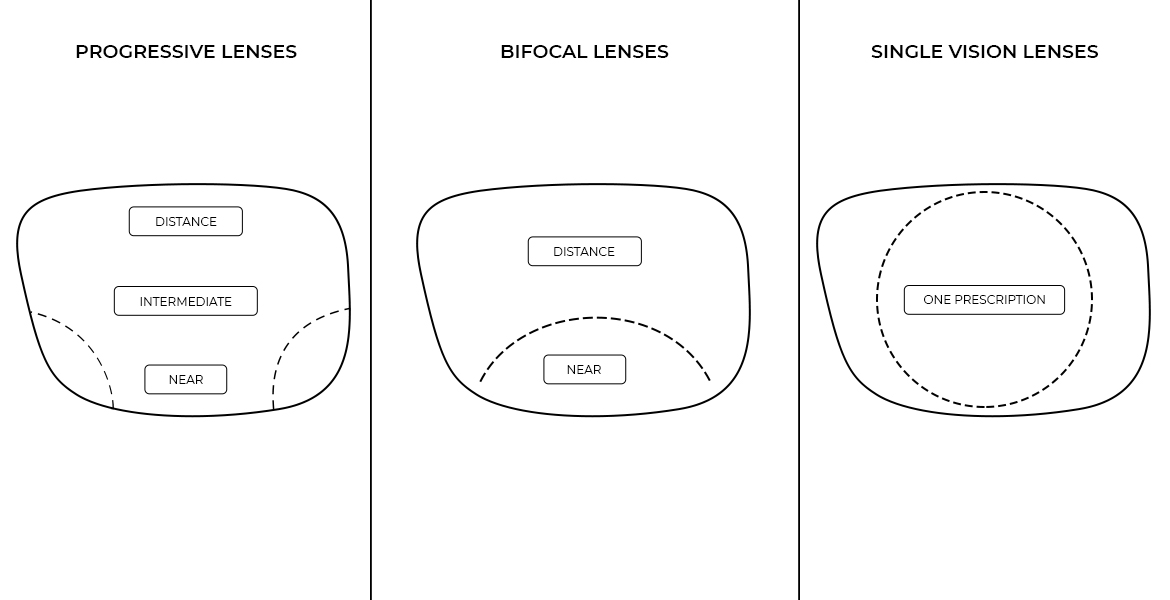
Progressive Lenses for Computer Use
Features to look for: Reduced digital eye strain, clear vision at intermediate distances.
Progressive eyeglass lenses offer a significant advantage for computer users. Many experience digital eye strain from prolonged screen time. Look for progressive lenses designed to minimize this strain. Key features include optimized intermediate vision zones—the area of the lens used for viewing computer screens—providing clear, comfortable vision at this crucial distance. This reduces eye fatigue and headaches commonly associated with prolonged computer use. Additionally, consider lenses with blue light filtering technology to further protect your eyes from harmful high-energy visible (HEV) light emitted by digital devices. These features are crucial for maintaining eye health and productivity in 2025.
Examples of lenses optimized for computer use: Specific lens types and their benefits.
Several progressive lens manufacturers offer specialized designs for computer users. These often incorporate wider intermediate zones, ensuring sharper vision at typical computer screen distances. Some brands boast enhanced contrast and reduced glare features, further enhancing comfort and clarity. Specific lens types might include those with digital-optimized designs or those incorporating blue light filtering technology. These advanced features provide significant benefits compared to standard progressive lenses, making them a worthwhile investment for anyone who spends considerable time working on a computer. For a wide selection of lenses designed for digital use, check out https://www.mozaer.com/search?q=progressive eyeglass lenses”>progressive eyeglass lenses – finding the right lenses for computer work is vital for reducing eye strain and improving productivity.
Progressive Lenses for Driving
Importance of clear distance vision: Statistics on accidents related to poor vision.
Safe driving requires excellent distance vision. Statistics consistently show a correlation between poor vision and increased accident rates. Blurry or impaired distance vision significantly compromises reaction time and the ability to accurately judge distances, making safe driving extremely challenging. In 2025, ensuring clear distance vision remains paramount for driver safety. Progressive lenses with wide and clear distance vision zones are critical for reducing driving risks.
Lens features beneficial for driving: Wide peripheral vision, reduced glare, and night driving capabilities.
Progressive lenses specifically designed for driving prioritize features that enhance safety and comfort behind the wheel. A wide field of vision is essential for monitoring traffic conditions effectively. Reduced glare is crucial for preventing distractions and ensuring clear vision, particularly in bright sunlight or at night. Many progressive lens options incorporate anti-reflective coatings to minimize glare. For night driving, specialized coatings or lens materials can improve contrast and visibility in low-light conditions. The enhanced vision provided by these features contributes significantly to safer and more comfortable driving experiences in 2025. To ensure optimal vision while driving, consider the specialized features available when selecting your https://www.mozaer.com/search?q=progressive eyeglass lenses”>progressive eyeglass lenses; it’s an investment in your safety and peace of mind.
【Finding the Perfect Progressive Lenses】
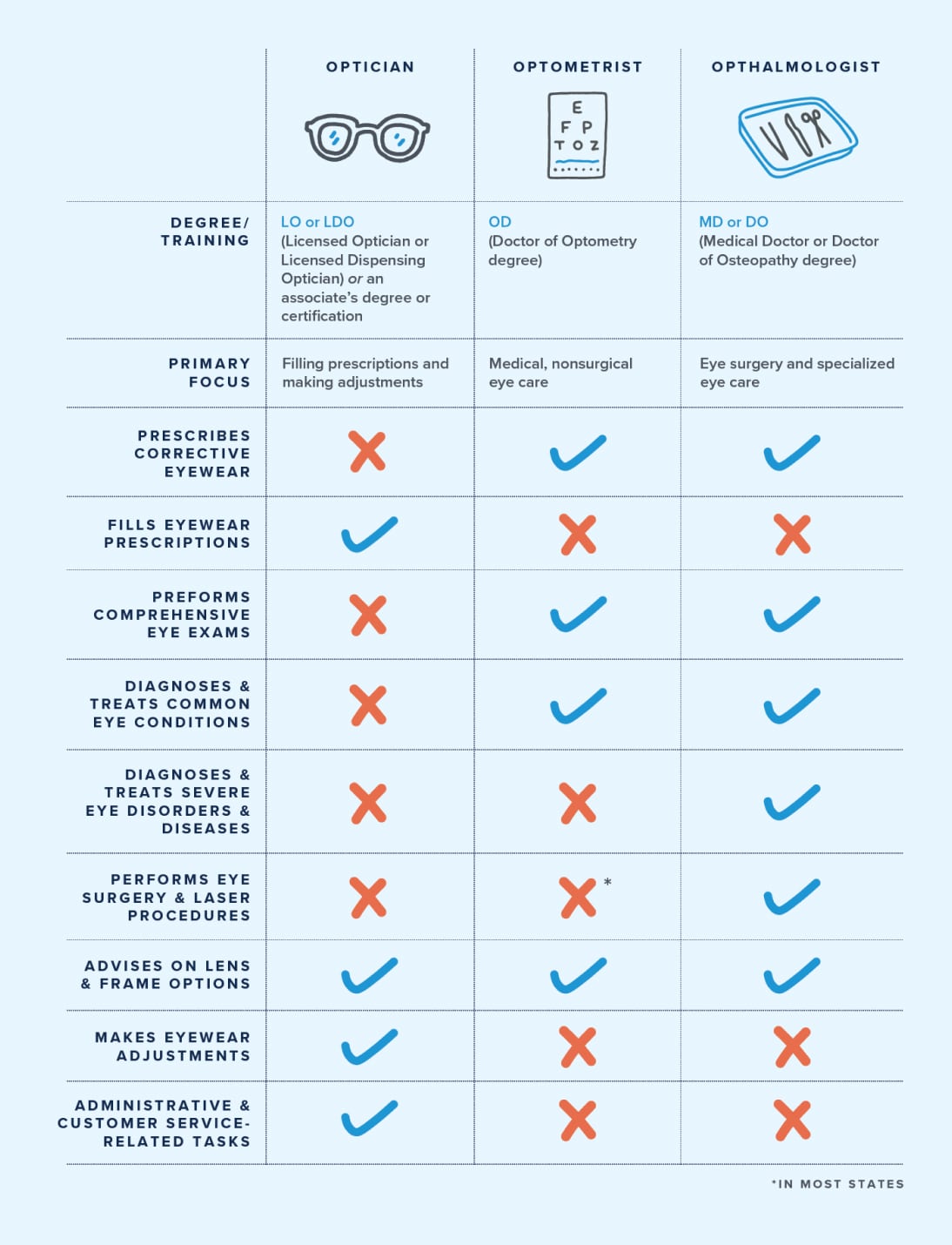
How to Choose the Right Progressive Lenses
Consulting an eye care professional: Importance of a comprehensive eye exam and personalized recommendations.
Choosing the right progressive eyeglass lenses requires a thorough approach. A comprehensive eye exam by a qualified optometrist or ophthalmologist is the crucial first step. This exam determines your precise prescription, identifying any refractive errors like nearsightedness, farsightedness, or astigmatism. A professional eye exam is essential because it ensures the lenses accurately correct your vision for all distances. The eye care professional will also assess your overall eye health, identifying any potential issues that might influence lens selection. Beyond the prescription, they’ll provide personalized recommendations tailored to your individual needs and lifestyle. Ignoring professional guidance can lead to uncomfortable and ineffective progressive lenses.
Factors influencing lens choice: Prescription, lifestyle, budget, and personal preferences.
Several factors significantly impact your choice of progressive eyeglass lenses. Your prescription is paramount, dictating the lens power needed to correct your vision. Lifestyle also plays a key role; individuals who spend significant time using computers might need lenses with enhanced intermediate vision zones, while drivers benefit from lenses optimizing distance vision and reducing glare. Budget considerations are essential, as progressive lenses range in price depending on features, materials, and brand. Finally, personal preferences influence the choice of lens material, frame style, and additional coatings (e.g., anti-reflective coatings or blue light filters). Carefully considering all these factors—prescription, lifestyle, budget, and personal preference—ensures you select progressive lenses perfectly suited to your needs and enhance your vision and quality of life.
Where to Buy Progressive Lenses
Online retailers: Examples of reputable online retailers selling progressive lenses.
Purchasing progressive eyeglass lenses online offers convenience and potentially competitive pricing. Several reputable online retailers specialize in eyewear, offering a vast selection of frames and progressive lenses. Many online retailers provide detailed information on lens types and features, allowing for informed decision-making. Before purchasing online, confirm the retailer’s return policy and customer support options, ensuring a smooth transaction and the ability to address potential issues. Reading online reviews and comparing prices across different retailers is also wise to secure the best value for your investment. Remember to always verify the legitimacy of the online retailer before providing personal information or making a purchase.
Local opticians: Advantages of purchasing from local opticians, including personalized service and adjustments.
Local opticians provide several advantages when purchasing progressive eyeglass lenses. The personalized service offered by local opticians includes expert guidance on lens selection, tailored to your specific vision needs and lifestyle. They’ll assist in finding frames that suit your face shape and personal style. Perhaps the most significant advantage is the ability to receive in-person adjustments. Proper lens fitting is critical for optimal comfort and visual clarity; local opticians can make on-site adjustments to ensure the lenses are positioned correctly for your eyes. This personal attention and post-purchase support make purchasing from local opticians a valuable option for many. To find a high-quality, local optician, it’s always a good idea to do some research and read online reviews. For a wide selection of progressive lenses, consider browsing https://www.mozaer.com/search?q=progressive eyeglass lenses”>progressive eyeglass lenses – finding the right pair is key to clear and comfortable vision.
【Advanced Topics and Considerations】
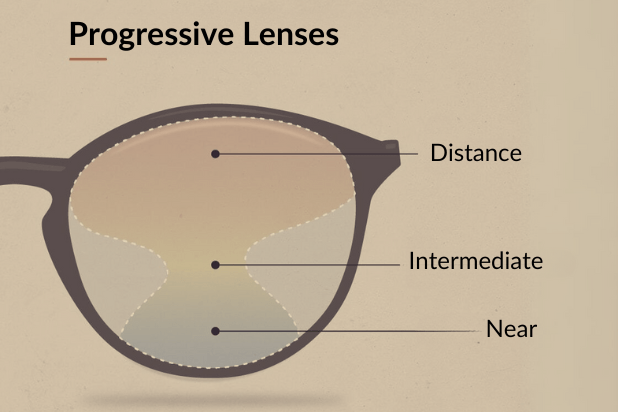
Progressive Lenses and Astigmatism
How astigmatism affects lens choice: Explanation of how astigmatism impacts lens design and correction.
Astigmatism, a common refractive error, affects how light focuses on the retina. Instead of a single focal point, multiple focal points are created, resulting in blurry vision at all distances. This condition significantly impacts the design and correction needed in progressive eyeglass lenses. Progressive lenses, already complex due to their gradual power change across the lens surface, require further refinement to accommodate astigmatism. The lens design must incorporate cylindrical power corrections alongside spherical power corrections to address both the focusing and astigmatic errors. Ignoring astigmatism when choosing progressive lenses results in suboptimal vision correction and potential eye strain. Accurate measurement of your astigmatism during your eye exam is essential for proper lens design. Choosing the correct progressive lenses for astigmatism ensures sharper, clearer vision across all distances.
Lens options for those with astigmatism: Specific lens types and technologies designed to correct astigmatism.
Several lens options cater specifically to individuals with astigmatism. Toric progressive lenses are designed to correct both spherical and cylindrical power, effectively addressing both nearsightedness/farsightedness and astigmatism. These lenses incorporate varying cylindrical power across the lens surface, mirroring the changing needs of the eye at different distances. Advanced technologies like free-form surfacing further enhance toric progressive lenses by creating more precise power distribution for even clearer vision. These sophisticated lens designs optimize visual acuity and minimize peripheral distortions often associated with correcting astigmatism in progressive lenses. For those with higher degrees of astigmatism, high-index toric progressive lenses may offer thinner and lighter lenses, enhancing comfort and aesthetics. Finding the right progressive lenses for astigmatism involves a comprehensive eye exam and careful consideration of available technologies to optimize vision correction.
High-Index vs. Standard Progressive Lenses
Differences in thickness and weight: Comparison of the physical characteristics of high-index and standard lenses.
The refractive index of a lens material determines how much light bends when passing through it. High-index lenses boast a higher refractive index than standard lenses, allowing for thinner and lighter lenses, even with stronger prescriptions. This difference is particularly noticeable in high-powered prescriptions for nearsightedness or farsightedness. Standard progressive lenses, particularly with strong prescriptions, can be noticeably thick and heavy at the edges, affecting comfort and aesthetics. High-index progressive lenses, in contrast, significantly reduce this thickness and weight, resulting in more comfortable and cosmetically pleasing eyewear. The reduced weight minimizes pressure on the nose and ears, enhancing the wearing experience. This makes them a superior choice for individuals with strong prescriptions seeking lighter and more comfortable progressive eyeglass lenses.
Cost differences and when to choose high-index lenses: Factors influencing the decision to choose high-index lenses.
While high-index progressive lenses offer significant advantages in terms of thickness, weight, and appearance, they generally come at a higher cost than standard progressive lenses. The increased manufacturing complexity and use of advanced materials contribute to the price difference. Whether the added expense is justified depends on several factors. Individuals with high prescriptions, particularly those who experience discomfort with thick lenses, will likely benefit from the upgrade. The improved comfort and aesthetics often outweigh the extra cost. The choice also depends on personal preferences and budget. If comfort and a sleek appearance are priorities and budget permits, high-index progressive lenses are a worthwhile investment. For those with lower prescriptions or tighter budgets, standard progressive lenses provide adequate vision correction at a more affordable price point. For a wide selection of both standard and high-index progressive lenses, consider browsing https://www.mozaer.com/search?q=progressive eyeglass lenses”>progressive eyeglass lenses to find the perfect fit for your needs and budget, ensuring optimal vision and comfort.
【Troubleshooting and FAQs】
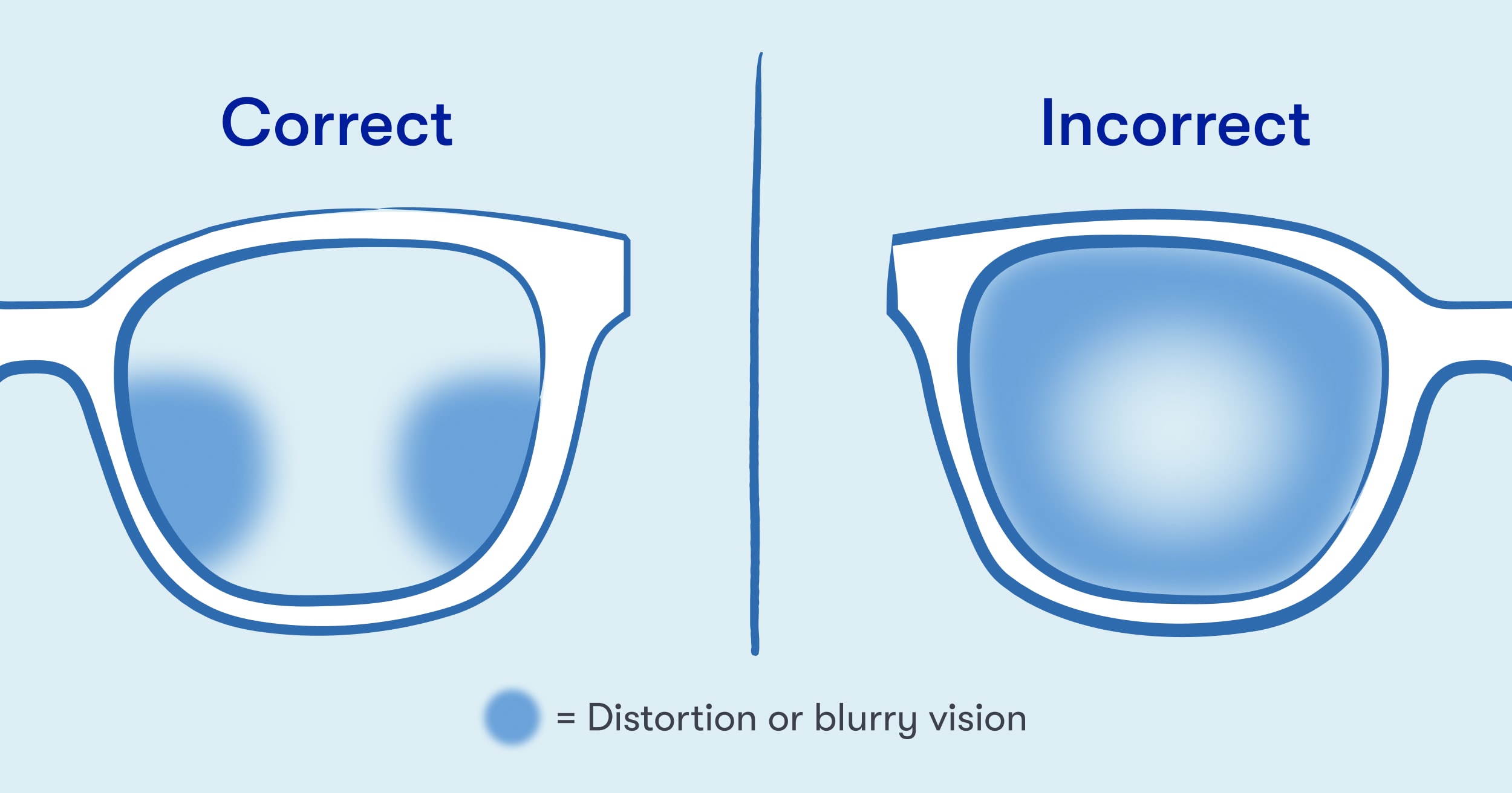
Progressive Lenses and Headaches/Eye Strain
Common causes of headaches and eye strain: Explanation of potential causes related to progressive lenses.
Headaches and eye strain are common complaints associated with adjusting to progressive eyeglass lenses. Several factors contribute to this discomfort. Initially, your eyes need time to adapt to the gradual power changes across the lens surface. This adaptation period can cause temporary eye strain and headaches as your visual system adjusts to focusing through different lens zones. Incorrect lens prescription is another significant cause. If the prescription isn’t perfectly matched to your individual needs, you may experience persistent eye strain and headaches. Improper lens fitting can also lead to discomfort. If the frames are ill-fitting or the lenses aren’t correctly centered, it can cause eye strain and headaches. Finally, pre-existing conditions like astigmatism, if not adequately corrected in the progressive lenses, can exacerbate eye strain and headaches. Understanding these potential causes is the first step towards finding solutions.
Solutions and remedies: Practical advice on addressing headaches and eye strain.
Addressing headaches and eye strain related to progressive lenses often involves a combination of strategies. Patience is key; give your eyes sufficient time to adapt to the new lenses. This adaptation period varies among individuals, but it typically takes several weeks. During this period, take frequent breaks from near work to rest your eyes. Practicing the 20-20-20 rule (look at an object 20 feet away for 20 seconds every 20 minutes) can help. If the discomfort persists, schedule a follow-up appointment with your eye care professional. They can assess the lens prescription and fitting to ensure everything is correct. They might suggest adjustments to the lenses or frames for improved comfort. Additionally, consider using lubricating eye drops to alleviate dry eyes, a common contributor to eye strain. For severe or persistent headaches, consulting your doctor is advisable to rule out other potential causes.
Warranty and After-Sales Service
Typical warranty periods: Information on standard warranty periods offered by different lens manufacturers.
Warranty periods for progressive eyeglass lenses vary among manufacturers. It’s crucial to check the specific warranty details provided by your retailer or lens manufacturer. Generally, warranties cover manufacturing defects, such as scratches or imperfections in the lens material. However, they typically do not cover damage caused by misuse or normal wear and tear. Some manufacturers offer extended warranties for an additional fee, providing more comprehensive coverage. Common warranty periods range from one to two years, although some offer shorter or longer durations depending on the lens type and associated features. Always retain your purchase receipt and warranty documentation for any potential claims.
Importance of after-sales service: Explanation of the importance of access to adjustments and repairs.
Access to reliable after-sales service is crucial when dealing with progressive eyeglass lenses. Even with a perfect prescription and initial fitting, adjustments may be needed as you adapt to the lenses. The ability to have your frames adjusted for a better fit is essential for optimal comfort and vision. Additionally, the possibility of requiring repairs, due to accidental damage or wear and tear, should be considered. A reputable supplier with robust after-sales service ensures you can receive timely adjustments and repairs. This is particularly important for delicate progressive lenses, as improper repairs can compromise visual clarity. Inquire about after-sales service options before purchasing progressive lenses, ensuring that repairs and adjustments are readily available. Choosing a provider with a strong track record of customer service provides peace of mind, knowing you’re supported even after your purchase. For a selection of progressive lenses with potentially excellent after-sales service, explore https://www.mozaer.com/search?q=progressive eyeglass lenses”>progressive eyeglass lenses to find a supplier that meets your needs.
Choosing Your Perfect Progressive Lenses: A Summary
This comprehensive guide has explored the world of progressive eyeglass lenses, providing you with the knowledge to make an informed decision about enhancing your vision. We’ve covered the fundamental differences between progressive lenses and bifocals, highlighting the smooth vision transition and wider field of view offered by progressive lenses. The key benefits include convenience (one pair for all distances), improved comfort, and reduced eye strain, leading to a significant enhancement in your daily quality of life.
We delved into various brands and technologies, showcasing leading manufacturers like Essilor Varilux, Zeiss, and Nikon, emphasizing the importance of considering your specific lifestyle, prescription strength, budget, and personal preferences when choosing. We’ve explained how to navigate the adjustment period, offering practical tips to make the transition smoother. The guide also addressed common concerns about cost, providing a realistic perspective on the long-term cost-effectiveness of progressive lenses versus multiple pairs of glasses.
Specific considerations for computer users and drivers were highlighted, emphasizing the importance of features like optimized intermediate zones, blue light filtering, and reduced glare for enhanced visual comfort and safety. We also covered essential details about progressive lenses for individuals with astigmatism, and the benefits of high-index lenses for those seeking thinner and lighter options.
Finally, we emphasized the importance of consulting a qualified eye care professional for a comprehensive eye exam and personalized recommendations. We discussed where to buy progressive lenses, highlighting the advantages of both online retailers and local opticians, emphasizing the importance of a comfortable fit and access to adjustments and repairs.
By now, you should have a clear understanding of what progressive lenses are, how they work, and which type is right for you. Remember, choosing the right progressive lenses is a crucial step towards improved visual clarity and a higher quality of life. Don’t hesitate to consult your optometrist for personalized advice and to find the perfect pair of progressive lenses to meet your unique needs. Remember to visit https://www.mozaer.com/search?q=progressive+eyeglass+lenses for a wide selection of progressive lenses to discover the perfect fit for your vision.
Investing in quality progressive eyeglass lenses is an investment in your well-being. Enjoy clear, comfortable vision at all distances!

Leave a Reply